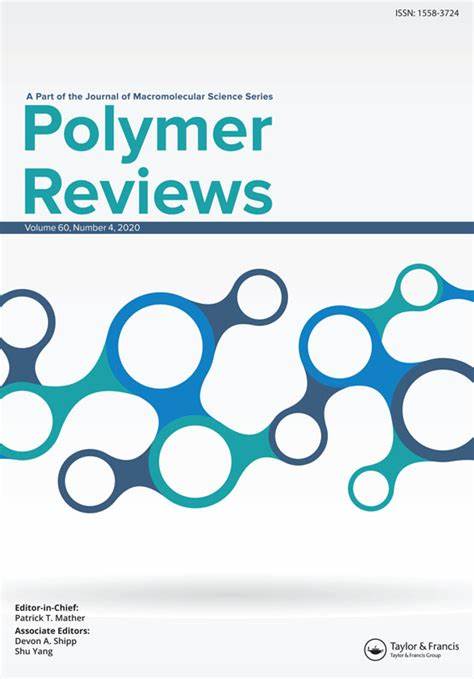Radical Polymerization of Methylene Heterocyclic Compounds: Functional Polymer Synthesis and Applications
IF 11.9
2区 化学
Q1 POLYMER SCIENCE
引用次数: 1
Abstract
Abstract Synthetic polymers sustain a wide range of applications but the quest for further sophistication and functionalization of polymers remains topical to improve their scope and performance. In this respect, the radical polymerization of exo-methylene heterocyclic compounds (MHCs) is attractive. Compared to the classical acyclic vinyl monomers constrained to the vinyl-type polymerization process, MHCs can undergo different polymerization modes, namely the radical ring-retaining polymerization (rRRP) and the radical ring-opening polymerization (rROP). In rRRP, the cyclic group is preserved and inserted as side group of the polymer backbone offering a myriad of post-polymerization modifications whereas functional groups are incorporated within the backbone of linear polymers and confer them some degradability in rROP. Herein, recent advances in the radical polymerization of MHCs as well as the variety of macromolecular structures and applications it offers are highlighted. The reversible deactivation radical polymerization of MHCs leading to well-defined MHC-based macromolecular architectures, including multifunctional, stimuli-responsive and degradable polymers, is also discussed. The review emphasizes the current limitations of the radical polymerization of MHCs as well as future prospects including the development of innovative bio-based MHCs. Overall, the radical polymerization of MCHs represents a powerful macromolecular engineering tool and a broad field of exploration for polymer chemists. Graphical Abstract亚甲基杂环化合物的自由基聚合:功能聚合物的合成及其应用
合成聚合物有着广泛的应用,但对聚合物进一步复杂化和功能化的追求仍然是当前的热点,以提高它们的范围和性能。在这方面,外亚甲基杂环化合物(mhc)的自由基聚合是有吸引力的。与传统的无环乙烯基单体限制在乙烯基型聚合过程中相比,mhc可以进行不同的聚合模式,即自由基保环聚合(rRRP)和自由基开环聚合(rROP)。在rROP中,环基被保留并作为聚合物主链的侧基插入,提供了无数的聚合后修饰,而官能团被纳入线性聚合物的主链中,并赋予它们在rROP中一定的可降解性。本文重点介绍了mhc自由基聚合的最新进展,以及它所提供的各种大分子结构和应用。还讨论了mhc的可逆失活自由基聚合导致明确定义的mhc为基础的大分子结构,包括多功能,刺激响应和可降解的聚合物。综述了目前自由基聚合mhc的局限性以及未来的发展前景,包括创新的生物基mhc的发展。总之,高分子聚合物的自由基聚合是一种强大的大分子工程工具,也是高分子化学家探索的广阔领域。图形抽象
本文章由计算机程序翻译,如有差异,请以英文原文为准。
求助全文
约1分钟内获得全文
求助全文
来源期刊

Polymer Reviews
工程技术-高分子科学
CiteScore
24.80
自引率
0.80%
发文量
21
审稿时长
6 months
期刊介绍:
Polymer Reviews is a reputable publication that focuses on timely issues within the field of macromolecular science and engineering. The journal features high-quality reviews that have been specifically curated by experts in the field. Topics of particular importance include biomedical applications, organic electronics and photonics, nanostructures, micro- and nano-fabrication, biological molecules (such as DNA, proteins, and carbohydrates), polymers for renewable energy and environmental applications, and interdisciplinary intersections involving polymers.
The articles in Polymer Reviews fall into two main categories. Some articles offer comprehensive and expansive overviews of a particular subject, while others zero in on the author's own research and situate it within the broader scientific landscape. In both types of articles, the aim is to provide readers with valuable insights and advancements in the field of macromolecular science and engineering.
 求助内容:
求助内容: 应助结果提醒方式:
应助结果提醒方式:


